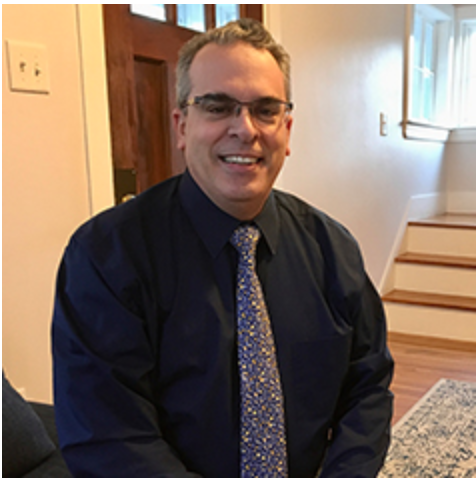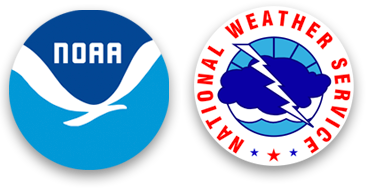Oral History: A Look Back with Hydrologist David Vallee - National Weather Service Heritage

Oral History: A Look Back with Hydrologist David Vallee
By NWS Heritage Projects StaffEditor's Note: This story was originally published on the NOAA History website, available here.
David Vallee comes from a musical family - including legendary singer and band leader Rudy Vallee - but the weatherbug bit him early and stayed with him. Vallee is the Hydrologist-in-Charge of NOAA’s National Weather Service Northeast River Forecast Center, which provides water resource and life-saving flood forecasting services to Weather Forecast Offices and hundreds of federal, state and local agencies throughout the Northeast and New York. He is considered an expert on the behavior of New England’s hurricanes and the region’s hurricane history.
David has worked for the National Weather Service for 32 years, but he has most recently led an effort at the Northeast River Forecast Center to examine changes in precipitation and temperature patterns across New England and its impact on flooding.
Hear a snippet of the interview recorded November 8, 2019:
Transcript:
On his early fascination with weather:
DV: So, let’s start with the weather bug. The weather bug bit me in August of 1976. We moved from Cranston to West Warwick that January. I switched schools from Woodridge Elementary School to Horgan; I was in third grade. That summer, Hurricane Belle came up the coast. My dad set me down in the basement; we were watching the TV. I see John Ghiorse, the on-air meteorologist at the time on Channel 10, and I’m watching the buzz saw. I was memorized by it. We had wind blowing all night, heavy rain, the whole bit. So that was on a Friday night, Friday night into Saturday. Sunday afternoon, as my grandparents often did – my dad’s parents lived literally five minutes down the street in a little village of Wescott on the Pawtuxet River. We were up on what was called Arctic Hill near the high school. For a weather guy growing up in West Warwick, that was a beautiful place. I had visibility markers. I could see Narragansett Bay from my window with a set of binoculars. We were up high. We were the highest point looking east toward the bay. Windy, snowy – I mean, it’s a beautiful place to grow up as a meteorologist, as a fanatic like I was. But my grandparents would always come up for dinner on the weekend. So this Sunday afternoon about three, 3:30, grandfather pulls in, in his ’73 Oldsmobile, which would later be my first car.
When I got out of college, he stopped driving because of his eyesight, and he gave me his car. He calls me out to the car. As we’re walking to the car, he says, “Hey, your dad was telling me you were really kind of mesmerized by this thing that hit us, by the hurricane.” I’m like, “Yeah, yeah.” He says, “I got a little something you might enjoy.” Pops open the hood, and he takes out the book from the 1938 hurricane by the Providence Journal. I was hooked. I’ve made much of my career on educating people on the whole behavior of New England hurricanes. I’ve walked the beaches, I’ve taken the photos, I’ve got what I call my next set of “before” pictures, before the next one hits. So much of my career has been around that one moment in my life.
On his career “a-ha” moments:
DV: I call a couple of my experiences in my career religious experiences. Two sets of twins is a religious experience. My first “religious” experience, honestly, was when I did the service assessment for the Weather Service of Hurricane Isabel, which hit the Carolina coastline. I had the good fortune of traveling with the colleague of mine who’s now down at the Ocean Prediction Center, Darin Figurskey. Darin was the meteorologist in charge of Buffalo at the time, and I was the science officer up in Boston in 2003. We went down to Albemarle Sound. We met in Raleigh, he and I drove out to Wakefield to the weather office there.
On the second day, which was a full day we were in Wakefield, I drove with warning coordination meteorologist Bill Sammler down into the town of Edenton. On our way down, you could see the changing behavior of the wind damage. You had microburst-looking wind, and then you had – you got close to where the eyewall hit and you started seeing tops of trees sheared off, roofs missing – a very different behavior. But coming from New England and all the work that I had done on New England hurricanes, I was in that town, and there was something eating at me, like there was something there I was supposed to see and I hadn’t seen it yet. So, on the last day that we were in Wakefield, we were to drive back to Raleigh to reconvene, and then the next day was going to be spent writing up the report while we were all together. Darin says, “Hey, which way do you want to go? You want to go back on the highway, or you want to go back on the back roads?” I looked at him – and he’ll tell you this story, too. I said, “Darin, there’s something in Edenton I’m supposed to see. Can we go the back way? I want to go back down that way.” He looks at me, and he goes, “You’re scaring me, boy.” I’m like, “Just trust me.”
So we go down, and I told him which way we wanted to go. We went down by some cotton fields. He stopped the car; I reached out of the car and picked some cotton. That was cool. A kid from the Northeast, I never saw cotton before. We get down into Edenton. We’re going over the Chowan River Bridge, which went over the very west end of Albemarle Sound, I looked out the window, and I said, “Stop the car. That’s it.” The west end of the Sound had an eight-foot storm surge. Carnage, houses blown off foundations, washer/dryers up on the hillside blown out the back walls. He and I spent the afternoon there taking pictures, talking to one or two people who were there trying to pick up the debris. I was looking at this one house. We went inside the house, and sheetrock ripped right off the wall right below the cabinets. So you knew how high this storm surge was. What caught my eye was a crib mattress cover wrapped around a clothesline. That was like, “Oh my God. Here I am in the Northeast telling people fifteen to twenty feet of surge. This is eight feet, and this is what it did.” So that was kind of my first aha moment. Okay?”
Listen to the full interview with David Vallee.
